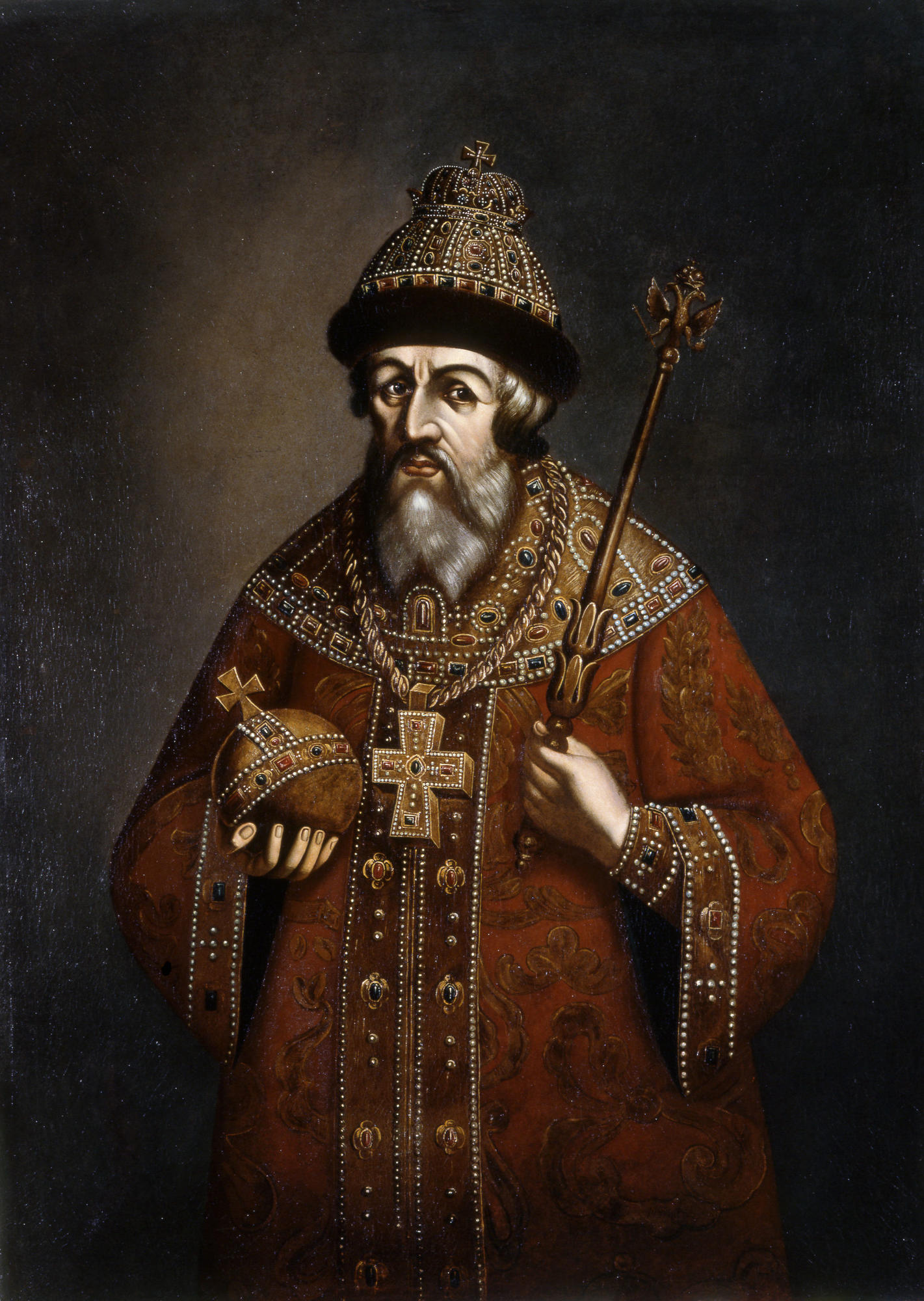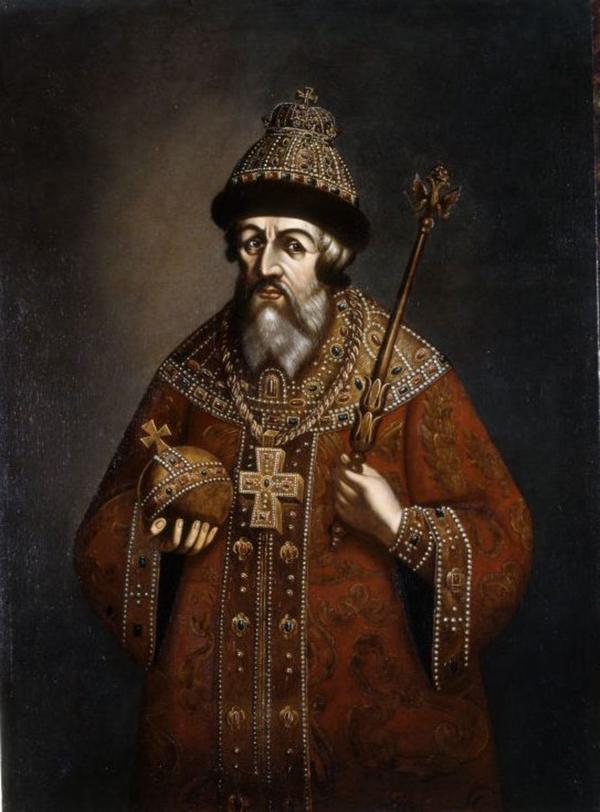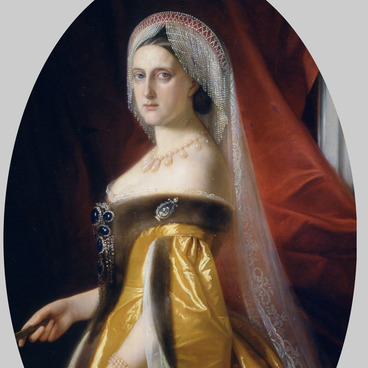The portrait depicts Tsar Ivan IV (Ivan the Terrible), the first tsar ‘of All Rus.’ The canvas was painted in the second half of the 18th century. This kind of dynastic portraits of Russian rulers was popular during the reign of Catherine the Great. The empress used every opportunity to emphasize that she was a Russian monarch, and she encouraged the interest of artists and other culture figures in the country’s history. Princes, Russian tsars and emperors were featured in theatrical productions, paintings and sculpture, in solemn odes. Dynastic portrait series adorned imperial residences, hung around on walls in aristocratic palaces and in various official premises in the capital city and provinces.
Dynastic portraits of the Romanovs and Rurikids is quite a rarity in museum collections. Generally, those portraits go back to parsuna painting, or earliest portraits that emerged in Russia in the 17th century. The word “parsuna” was derived from the Latin word “persona, ” which means “person” or “individual.”
The exhibited portrait of Ivan the Terrible follows traditions of parsuna painting. Parsunas merged features of icon painting and of the European secular portrait. Originally, they used to be produced in royal workshops, with artists capturing images of the rulers. At the time, parsunas were a phenomenon of court culture. Portraits were quite conventional, and could be even partially invented images, and not always were they faithful in rendering outward appearances. Therefore, masters would use captions or attributes that would make the sitter’s identification easier.
Tsars were painted according to one and the same pattern: They were usually dressed in the Grand Accoutrement, or full royal garment, with customary regalia of Russian rulers. This model was followed in this depiction of Tsar Ivan the Terrible: He has a royal cap on his head, and holds a scepter and an orb in his hands. Pearls and gems are scattered in abundance on a wide neckpiece and along the stripes decorating the tsar’s attire. The tsar is represented as a wise monarch who takes good care of his subjects.
Ivan the Terrible has an association with the Russian North. According to an order issued by the tsar in 1584, a wooden fortress was established on the right bank of the Northern Dvina River, around the Archangel Michael Monastery. The fortress later gave the city of Arkhangelsk its name. According to initial plans, it was to be built as a sea port “for trading with the English at fairs.”
Dynastic portraits of the Romanovs and Rurikids is quite a rarity in museum collections. Generally, those portraits go back to parsuna painting, or earliest portraits that emerged in Russia in the 17th century. The word “parsuna” was derived from the Latin word “persona, ” which means “person” or “individual.”
The exhibited portrait of Ivan the Terrible follows traditions of parsuna painting. Parsunas merged features of icon painting and of the European secular portrait. Originally, they used to be produced in royal workshops, with artists capturing images of the rulers. At the time, parsunas were a phenomenon of court culture. Portraits were quite conventional, and could be even partially invented images, and not always were they faithful in rendering outward appearances. Therefore, masters would use captions or attributes that would make the sitter’s identification easier.
Tsars were painted according to one and the same pattern: They were usually dressed in the Grand Accoutrement, or full royal garment, with customary regalia of Russian rulers. This model was followed in this depiction of Tsar Ivan the Terrible: He has a royal cap on his head, and holds a scepter and an orb in his hands. Pearls and gems are scattered in abundance on a wide neckpiece and along the stripes decorating the tsar’s attire. The tsar is represented as a wise monarch who takes good care of his subjects.
Ivan the Terrible has an association with the Russian North. According to an order issued by the tsar in 1584, a wooden fortress was established on the right bank of the Northern Dvina River, around the Archangel Michael Monastery. The fortress later gave the city of Arkhangelsk its name. According to initial plans, it was to be built as a sea port “for trading with the English at fairs.”


